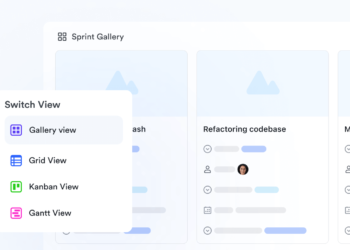Man, visual content is just wild these days. You can snap a picture of your cat and, with the right AI tool, boom—now it’s a dramatic mini-movie, probably with some slow-motion tail flicks and epic music. Seriously, these image-to-video things are getting out of control (in a good way).
So, let’s say you’re dabbling with these tools. Maybe you want to loop a dreamy sunset for your TikTok, or you’re trying to make some flashy ads that don’t look like they were made in PowerPoint—whatever, I’m not judging. You’re gonna run into something called Quick Mode and Studio Mode. Sounds fancy, right? But what’s the actual difference?
Honestly, it comes down to how much effort you feel like putting in. Quick Mode is like the drive-thru of video creation—fast, easy, you get something decent with minimal fuss. Studio Mode? That’s the full sit-down meal where you can tweak every little detail until you’re either super proud or slightly insane. Each one’s got its place, depending on whether you’re just trying to churn out something quick or you’re ready to geek out over every frame. Choose your own adventure, basically.
Quick Mode is designed for speed, simplicity, and automation. It’s the go-to choice when you want fast results without spending a lot of time tweaking settings. With most image to video AI tool platforms, Quick Mode analyzes the image instantly and applies intelligent animations based on the type of content — skies, water, foliage, or human elements.
You just pick a ready-made animation style, mess around with a couple settings—think speed, direction, that sort of thing—and boom, your video’s done in no time. Honestly, it’s a lifesaver if you want something that looks slick but don’t have the patience (or, let’s be real, the technical chops) to wade through complicated menus. Great for blasting out content for Insta, tossing together a fast promo, or just playing around for fun.
Here’s the real kicker: Quick Mode basically flattens the learning curve. Doesn’t matter if you’ve never touched an image-to-video AI thing in your life. You can still whip up some eye-catching animations with almost zero effort. It’s like cheating, but, you know, legal.
Alright, so Studio Mode is basically the playground for the control freaks (in the best way possible). We’re talking about the folks who want to tweak every pixel and make sure every little thing moves exactly how they dreamed it up. This isn’t your quick ‘n dirty animation—nah, this is where the image-to-video AI tool actually flexes its muscles.
You want to mess with motion paths? Go for it. Depth mapping? All yours. Get wild with keyframes, slice up objects, isolate and animate just the bits you want—Studio Mode’s got your back. Yeah, it’s gonna take more effort, but come on, the stuff you make here? Way more unique and polished. Honestly, if you’re making stuff for brands, film, ads, or you just want to show off on your next reel, this is where you want to be. You can sync everything to sound, match a brand’s vibe, or just keep fiddling until it looks *chef’s kiss* perfect. Sure, it’s not for people who want a quick result, but if you’re after something that really stands out? Studio Mode is your new best friend.
Honestly, if you’re in a rush and just want something that looks slick without jumping through a million hoops, Quick Mode’s your best friend. Think TikTok creators cranking out daily clips, influencers humble-bragging about their latest beach trip, or brands scrambling to hop on whatever hashtag’s trending this week—yeah, that’s when you hit Quick Mode.
Also, it’s perfect if you’ve got zero clue what vibe you’re going for. The AI presets? Total lifesavers. You slap one on, and boom, instant preview. If it sucks, just try another—no stress, no commitment. Picture this: you’ve got a killer mountain photo, right? Toss it into one of those fancy image-to-video AI apps, pick the “windy scene” in Quick Mode, and you’ll have a looping video ready to flex on your feed before you can say “engagement boost.” Five minutes, tops.
Alright, here’s the deal: if you’re after that whole “cinema magic” vibe or just want every pixel to look like you meant it, Studio Mode’s where you wanna be. Seriously, it’s like the VIP section for people messing around with client projects, fancy editorial stuff, or those portfolio pieces you wanna show off.
You get the keys to everything—layers, depth, shadows, lighting, all of it. Wanna make someone’s hair blow in the wind? Go for it. Got a wild urge to toss some ripples in the ocean or fake some artsy lens blur? Knock yourself out. It’s all right there.
Yeah, I won’t lie, it’s gonna chew up more of your time and probably test your patience a bit—this isn’t just click-and-go. But if you’re the kind of person who sweats the tiny details, man, it pays off. That level of control? Only the heavy-duty image-to-video AI tools can pull that off. The rest? They’re just playing catch up.
Doesn’t matter which mode you pick, honestly—the AI’s running the show either way. Basically, these image-to-video tools chew through your pics with deep learning magic, figuring out all the textures, depth, where things are moving, how the light hits—seriously, it’s wild. Go with Quick Mode, and the AI just does its thing, makes the calls for you. Studio Mode? That’s where you get some levers to pull and buttons to smash, do it your way.
But now things are getting kinda blurry between the two. Some apps let you kick things off in Quick Mode, then jump into Studio Mode when you wanna get picky and tweak stuff. It’s like, you can be lazy at first, then go full control freak later. Perfect if you want those pro-looking results without spending a million years fussing over every detail.
Alright, here’s the thing: picking between Quick Mode and Studio Mode? It’s mostly about what you’re trying to pull off. Quick Mode’s your fast pass—no-fuss, get-it-done, boom, you’ve got a moving image. Studio Mode, though, that’s where you roll your sleeves up and get wild with all the bells and whistles. More control, more tweaks, more room to flex those creative muscles.
If you’re just jazzing up a selfie for kicks, Quick Mode’s probably all you need. But if you’re aiming for something a bit more epic—like, I dunno, a full-on music video vibe or something cinematic—then Studio Mode’s your playground.
Honestly, whichever route you pick, you’re doing way more than making pixels wiggle. You’re putting a story out there, giving folks something to feel, and generally showing off. The same thing applies when creating anything that might fall under pinay latest viral content; it’s all about expression. So, mess around with both. You’ll figure out pretty quickly which one vibes with your style. No need to overthink it. Just go make something cool.






